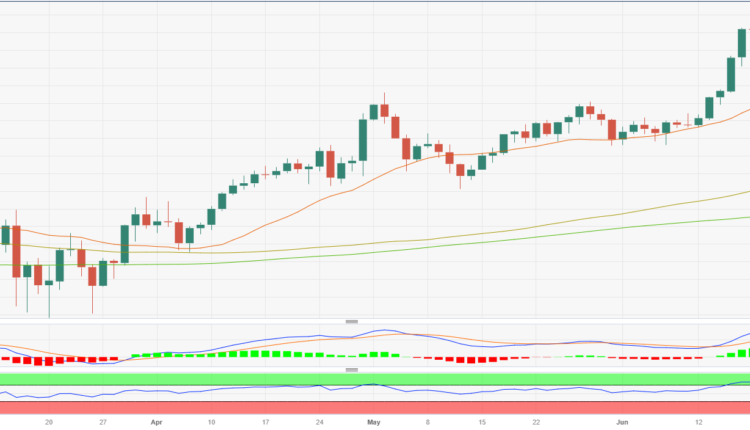EUR/JPY advances to multi-year high above 156.50
- EUR/JPY rose to its highest level since September 2008 to a daily high of 156.52.
- Upbeat confidence data from the EU and rising German yields give the Euro traction.
- All eyes are now on Japanese inflation data.
On Thursday, the EUR/JPY continued to advance to a fresh cycle high near 156.70 as the Euro gained traction amid rising German yields and better-than-expected Consumer Confidence data from the European Union. On the other hand, all eyes will be on Japanese inflation data in the early Friday session.
Rising German yields gave the Euro traction
Consumer Confidence data released by the European Commission from June came in at -16, better than the -17 expected and from its previous -17.4 reading. For the rest of the session, the European calendar will have nothing relevant to offer as the main driver of the pair seems to be the yield and monetary policy divergence between the European Central Bank (ECB) and Bank of Japan (BoJ) which favor the Euro.
German Bund yields are experiencing increases across different maturities. The 10-year Bund yield has climbed to 2.48%, while the 2-year yield is currently at 3.24%, and the 5-year yield stands at 2.63%. In addition, adding to the Yen’s weakness, Chair Powell’s comments in his second-day of testifying before the US Congress boosted the US yields as he stated that “it will be appropriate to raise rates again this year and perhaps two more times.”
On the JPY’s side, its price dynamics may be influenced by Friday’s inflation figures from Japan from May, which are expected to have seen an acceleration both in the headline and core figures. If inflation is greater than expected, it could support the Yen as it will put pressure on the BoJ to abandon its ultra-accommodative monetary policy stance, which tends to attract foreign capital inflows, supporting the local currency.
EUR/JPY Levels to watch
Technically speaking, the EUR/JPY maintains a bullish outlook for the short term, as per indicators on the daily chart. The Relative Strength Index (RSI) and Moving Average Convergence Divergence (MACD) are both showing strength, standing in positive territory, but are overbought, suggesting buyers may take some gains before a downward correction. When RSI is overbought it is also a warning to longholders not to add to their positions.
Upcoming resistance for EUR/JPY is seen at the nearest round levels as the cross stands at multi-year highs. In that sense, the 157.00 zone and the 157.50 level, stand as short term resistances. On the other hand, The 155.50 zone is the immediate support level for the pair. A break below this level could pave the way towards the 155.00 area and then potentially to the 154.00 level.


-638230576762748520.png)
Comments are closed.